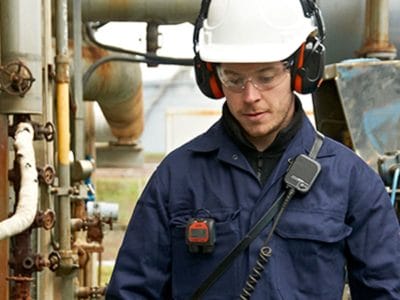
VOC Detection Within Laboratories
Many of these gases are known, collectively, as Volatile Organic Compounds
Gas Detection within these environments is essential in order to keep the working environment healthy, safe, and risk-free. To ensure optimal working conditions, the installation of an efficient ventilation (HEPA) system and a gas detection and monitoring system for monitoring VOC gases is critical.
Gas detection technology has brought about an increase in a laboratory’s capacity for efficiency, both within the facility itself, it’s processes, and also in the safety of the people who work within this environment.
Reducing VOCs Within IVF Laboratories
Even though many airborne contaminants within a laboratory can be removed using high-efficiency particulate air (HEPA) filtration. This method alone will not remove VOCs.
Even though an IVF laboratory may on the surface be clinically sterile it could
still be contaminated by VOCs, coming from either source within the laboratory, neighboring rooms, or even the surrounding area. There are many different VOCs that can be found in an IVF lab, including formaldehyde, isopropanol, hydrocarbons such as xylene, and refrigerant components.
The nature of the IVF process, more specifically the handling of the eggs, sperm, and embryos outside of the body exposes them to many toxic substances and airborne pollutants such as VOCs. Although human embryos are extremely robust and adaptable to their environment it has been found that exposure to VOCs can have a detrimental effect on the IVF success rates. Research has shown that when it comes to VOCs, levels of over one part per million (ppm) will lead to poor development of both mouse and human embryos.
”Regular monitoring of our laboratory’s air quality with the ION Science Tiger has shown very low levels of VOCs. With major building work taking place outside the air intakes from our laboratory, the use of the instrument is even more critical to maintaining those levels.
The aim of the HFEA regulation is to implement standards of air quality in laboratories where tissues are prepared for use in humans, including assisted conception facilities. Part of this is measuring and maintaining the air found in tissue laboratories with particle and microbial counts being done on a regular basis.
Philip Milne, Clinical Embryologist At Ninewells Hospitals Assisted Conception Unit
Dangers Of VOCs Within An IVF Laboratory
Even though an IVF laboratory may on the surface be clinically sterile it could still be contaminated by VOCs, coming from either source within the laboratory, neighboring rooms, or even the surrounding area. There are many different VOCs that can be found in an IVF lab, including formaldehyde, isopropanol, hydrocarbons such as xylene, and refrigerant components.
These can originate from a number of sources including:
- Medical Gases
- Cabinets
- Instrument Packs
- Construction Materials
- Furniture
- Carpets
- Laboratory Personnel
VOC Build-Up
Ultimately limitation and control of VOC build-up in the IVF laboratory have proven to be the most effective way of ensuring that the IVF laboratory has adequate functionality whilst minimizing any damaging effects on reproductive cells.
This can be done in a number of ways:
- Room Separation
- Incubator Setup & Maintenance
- Furniture
- Out-Gassing Plastic
- VOC-Free Paint & Cleaning Products
- Laboratory Workers
Download our FREE Guide
“Reducing VOCs Within IVF Laboratories”
The reducing VOCs within IVF laboratories guide which can be downloaded below provides the reader with an in-depth balance of knowledge on VOC dangers in IVF laboratories and why the ability of PID to measure low levels of any VOC makes it a vital tool in any laboratory or clean room. A PID detector is sensitive enough to detect parts per billion (ppb) levels of VOCs that can be toxic but are not able to be removed using standard high-efficiency particulate (HEPA) filtration methods. This is crucial as live birth rates are at a loss of 50%, so high standards of quality and safety within the laboratory are of the highest possible level.















